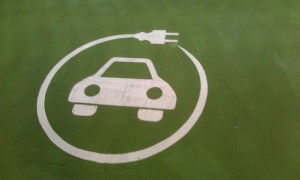Convergence and divergence
Course subject(s)
Module 2: Fuzzy borders: expansion and interconnection of infrastructure systems
T echnical convergence is ‘the tendency for different technological systems to evolve toward performing similar tasks’. For example, in the past we used to have a stopwatch and a voice recorder, and now these features, along with many others, come together into the neat package of a smartphone. For this MOOC, we are primarily interested in convergence phenomena in infrastructures. That is infrastructures evolving toward the performance of similar tasks. In the early 1980, the fear was that convergence would be accompanied with an increased concentration of power. In the twenty-first century it however became clear that the opposite was true. Convergence has boosted competition nd innovation. Today’s world of ICT, media and telecommunications is widely diverse, partly because multiple services can be offered via competing infrastructures. The opposite effect of convergence can also be identified: divergence: dedicated and separate infrastructures (for example separate railways for freight and passenger transport).
echnical convergence is ‘the tendency for different technological systems to evolve toward performing similar tasks’. For example, in the past we used to have a stopwatch and a voice recorder, and now these features, along with many others, come together into the neat package of a smartphone. For this MOOC, we are primarily interested in convergence phenomena in infrastructures. That is infrastructures evolving toward the performance of similar tasks. In the early 1980, the fear was that convergence would be accompanied with an increased concentration of power. In the twenty-first century it however became clear that the opposite was true. Convergence has boosted competition nd innovation. Today’s world of ICT, media and telecommunications is widely diverse, partly because multiple services can be offered via competing infrastructures. The opposite effect of convergence can also be identified: divergence: dedicated and separate infrastructures (for example separate railways for freight and passenger transport).
There are a number of issues that almost always come hand in hand with convergence and divergence in infrastructures:
- Convergence and divergence have an effect on users and companies who are using the services provided through infra-systems. This often leads to uncertainty and the question which technologies should be purchased and which not.
- Convergence or divergence often lead to the inception of new business models.
- Convergence and divergence are also connected to processes of liberalization and market evolution.
- The rules and institutions that emerge during the convergence process and that stimulate or delay this process. Of key importance is the creation of technological standards.
- Regulation. As a result of convergence and evolution of infra-systems, roles and responsibilities and public interests change. And this is where regulation steps in.
In the next web lecture we will explain convergence and divergence in more detail.

Next Generation Infrastructures by TU Delft OpenCourseWare is licensed under a Creative Commons Attribution-NonCommercial-ShareAlike 4.0 International License.
Based on a work at https://ocw.tudelft.nl/courses/next-generation-infrastructures/.



